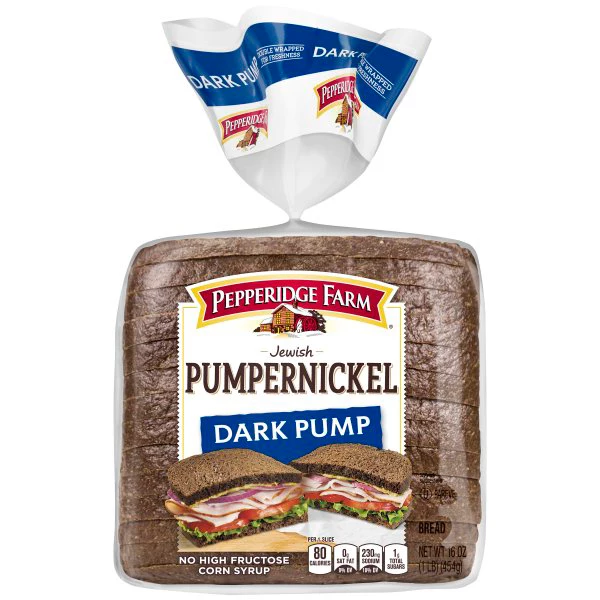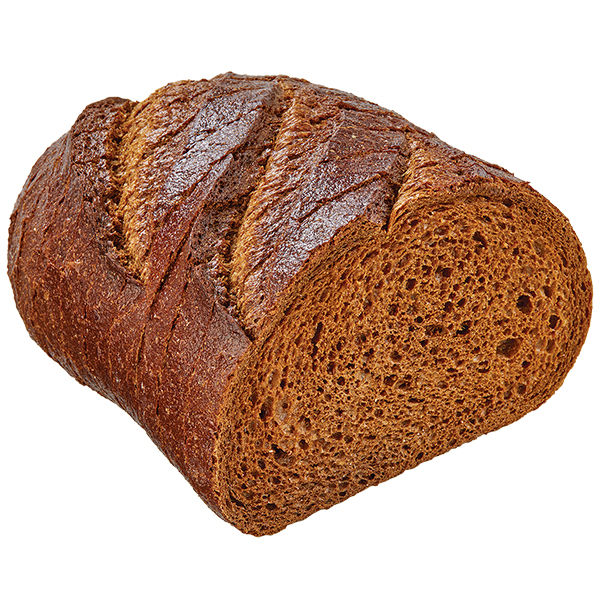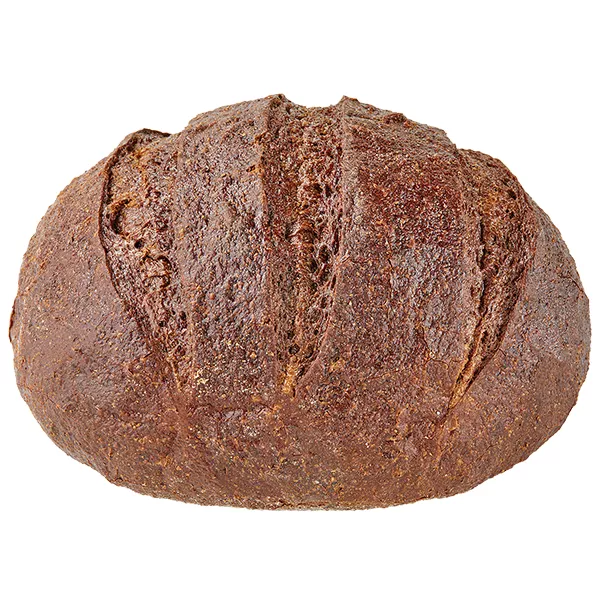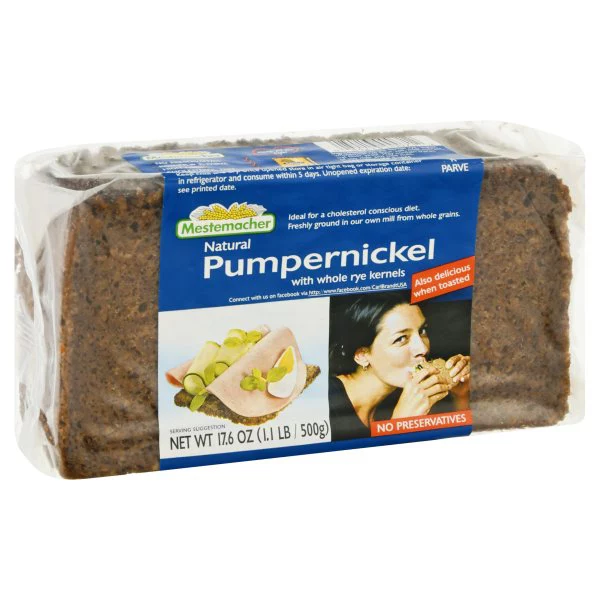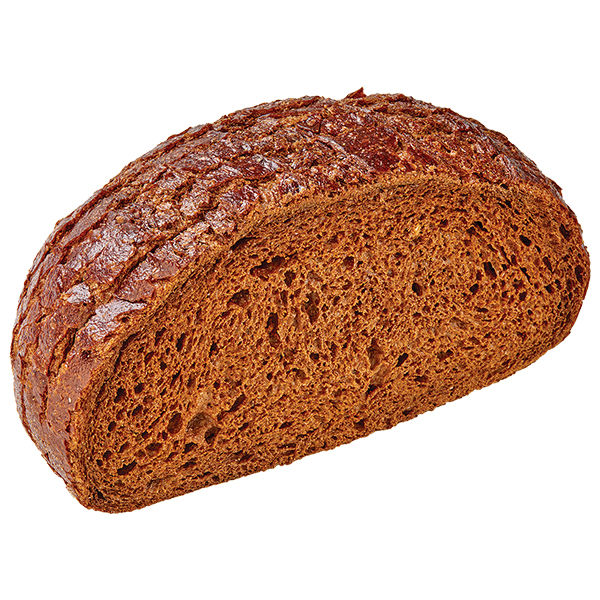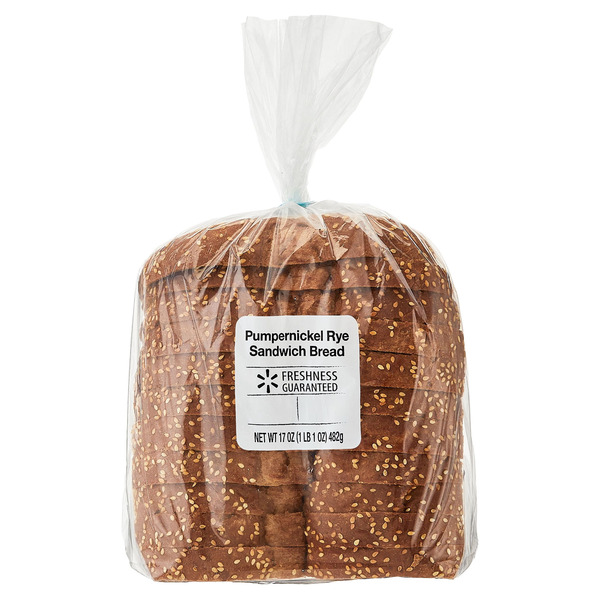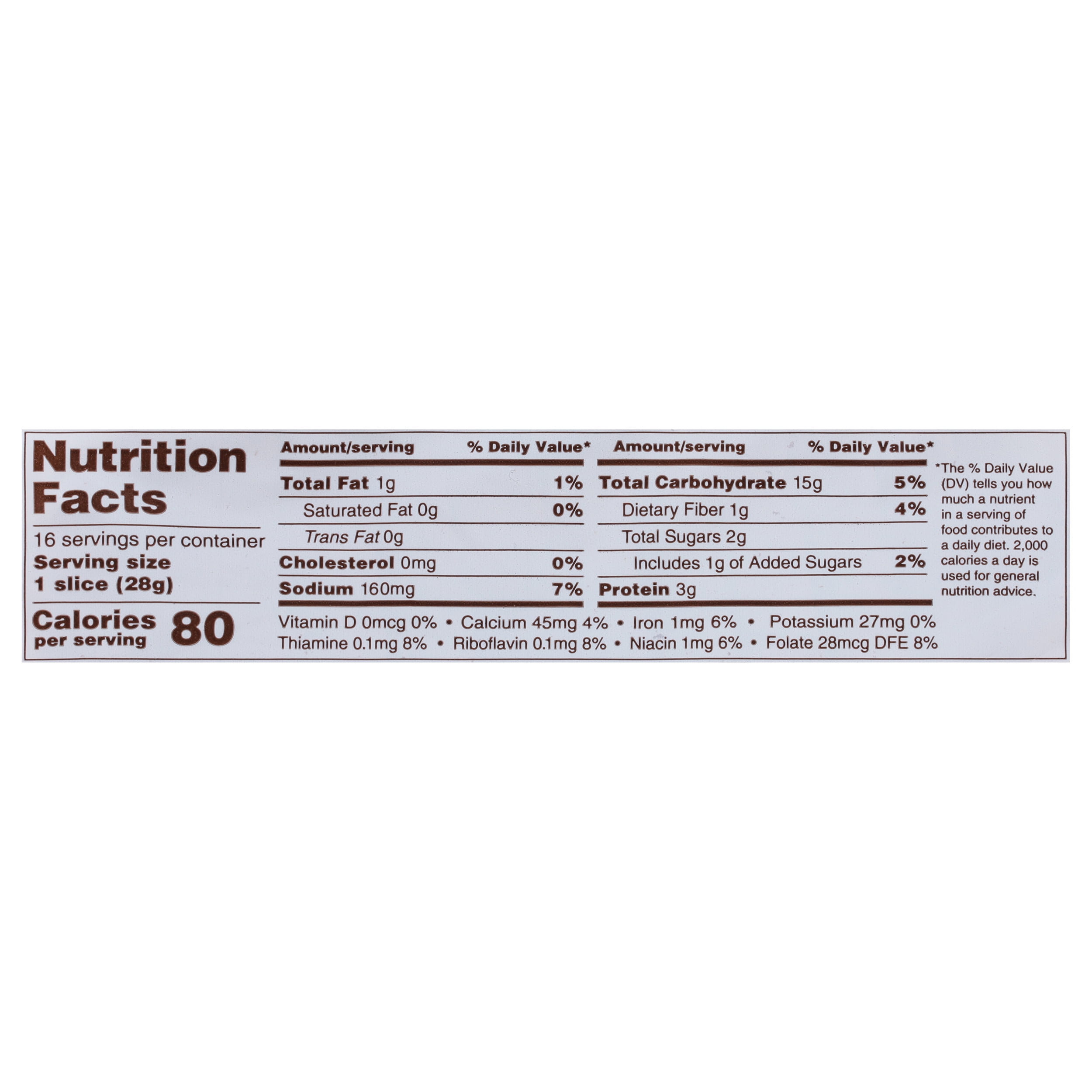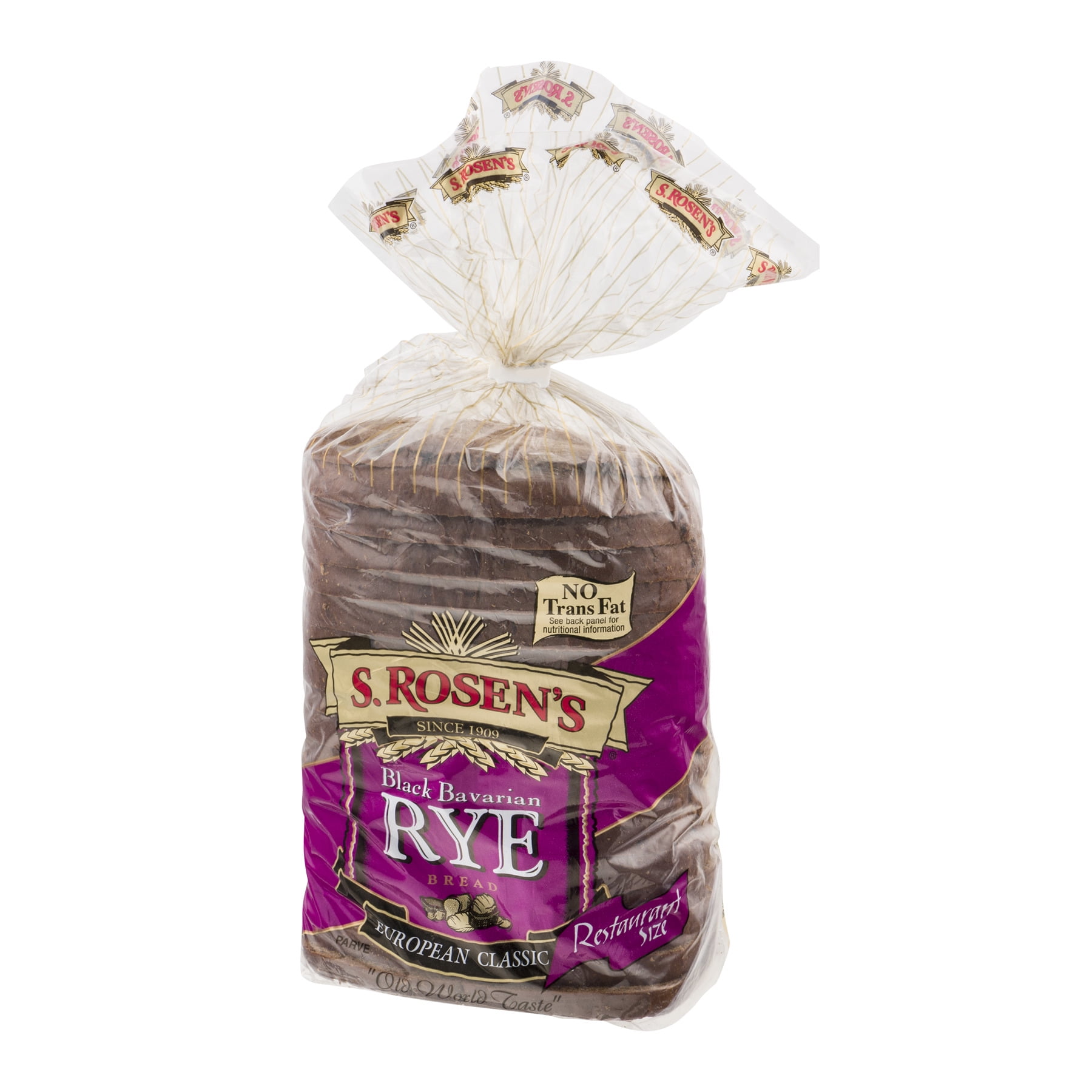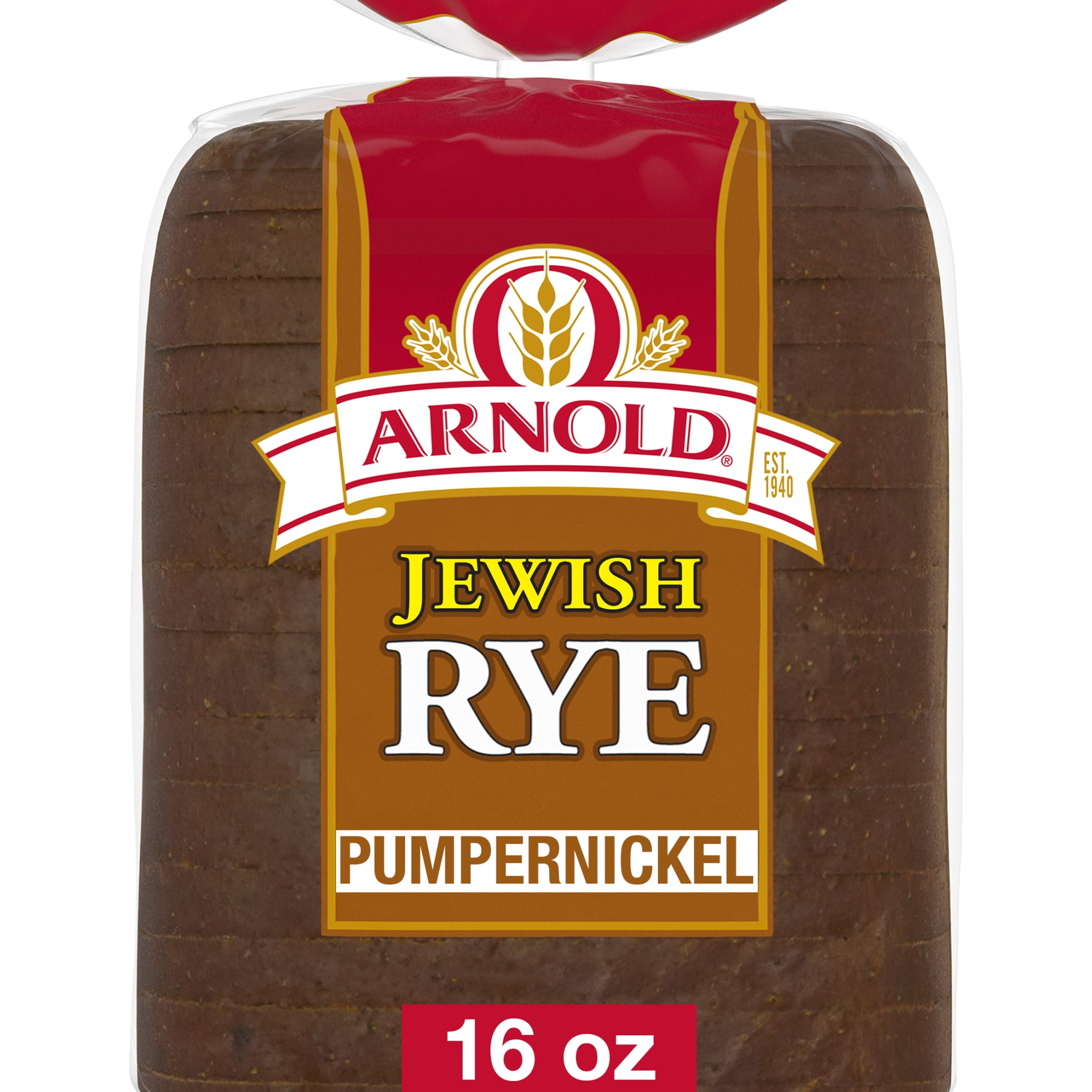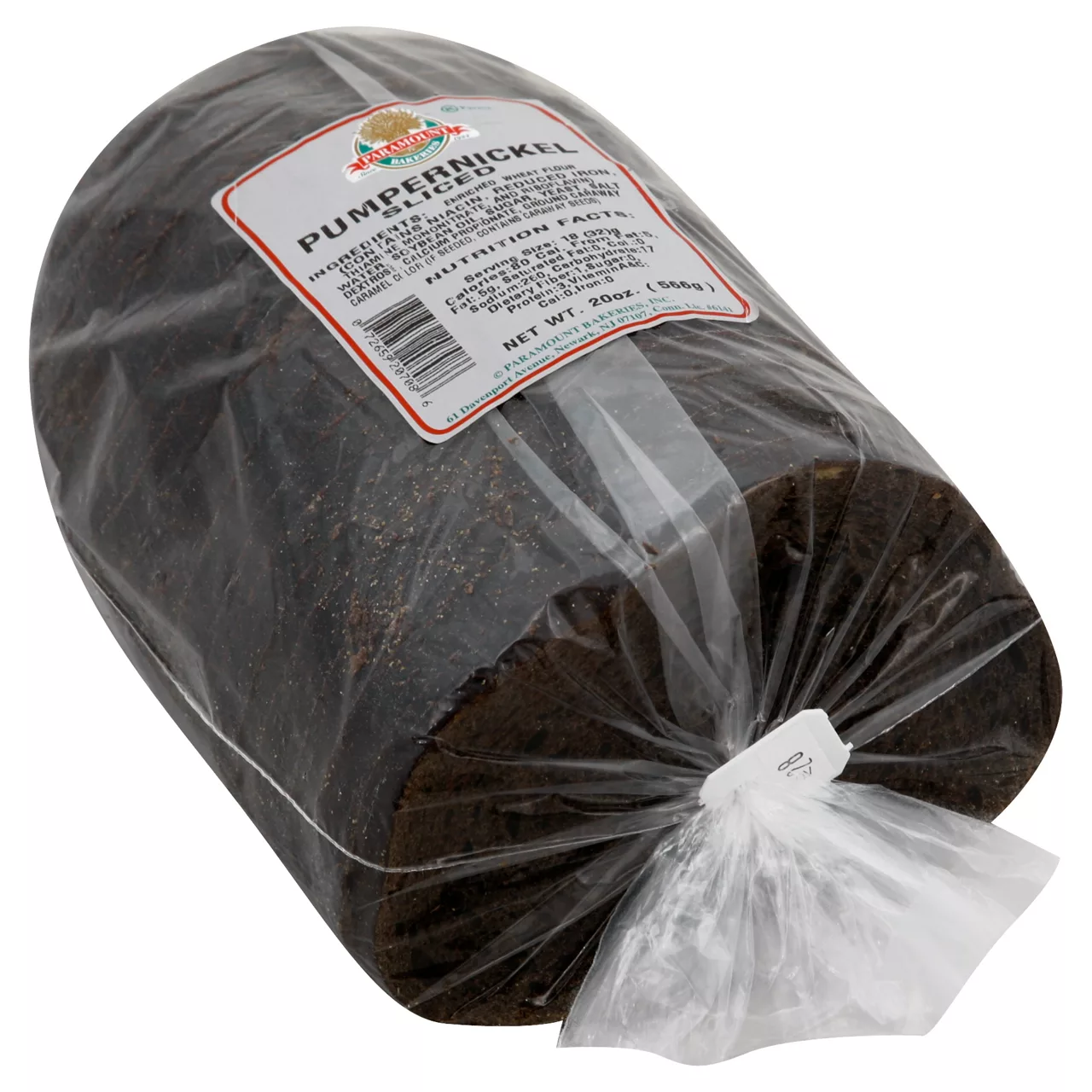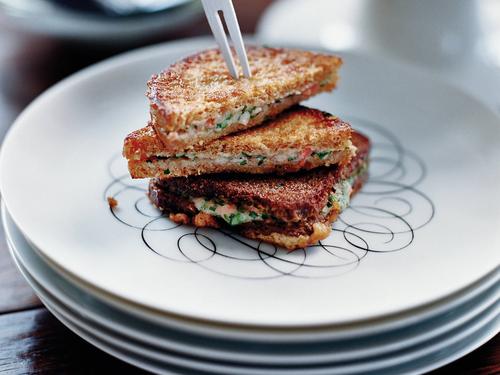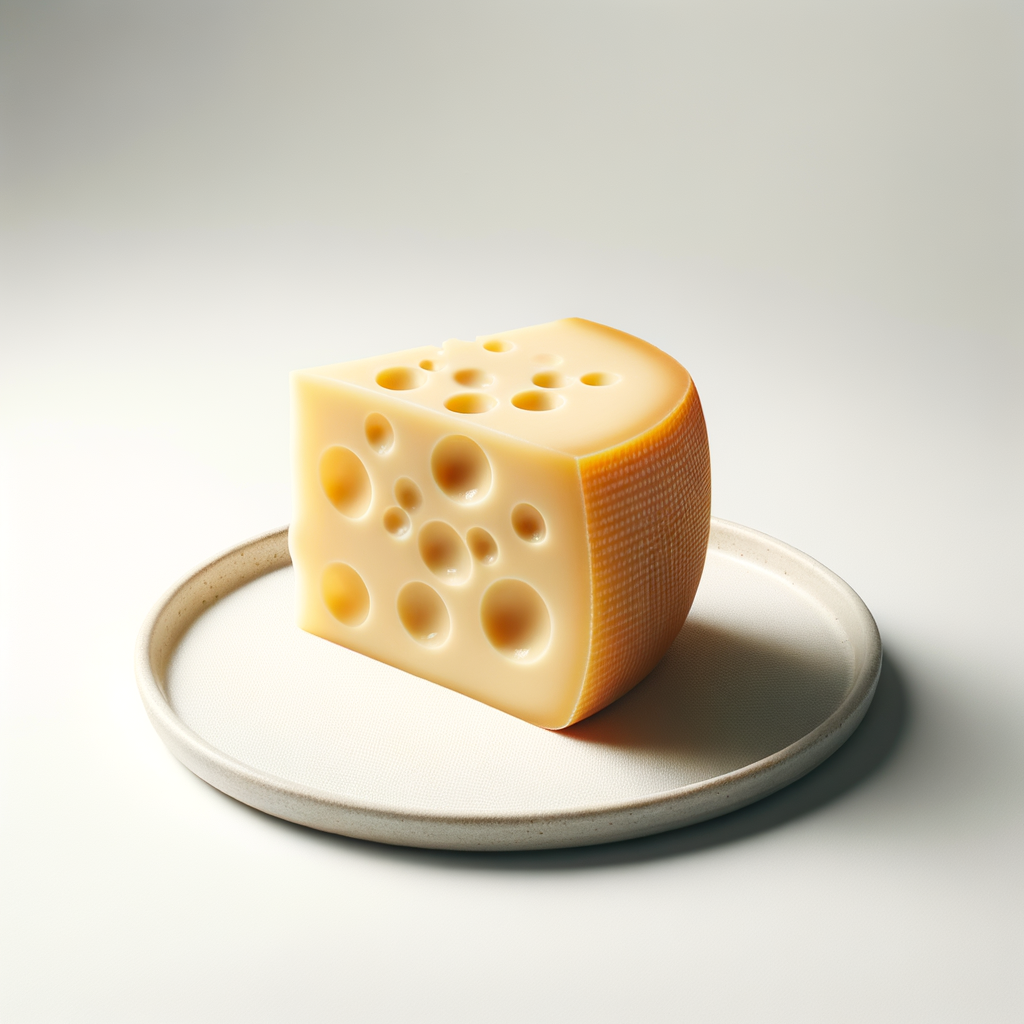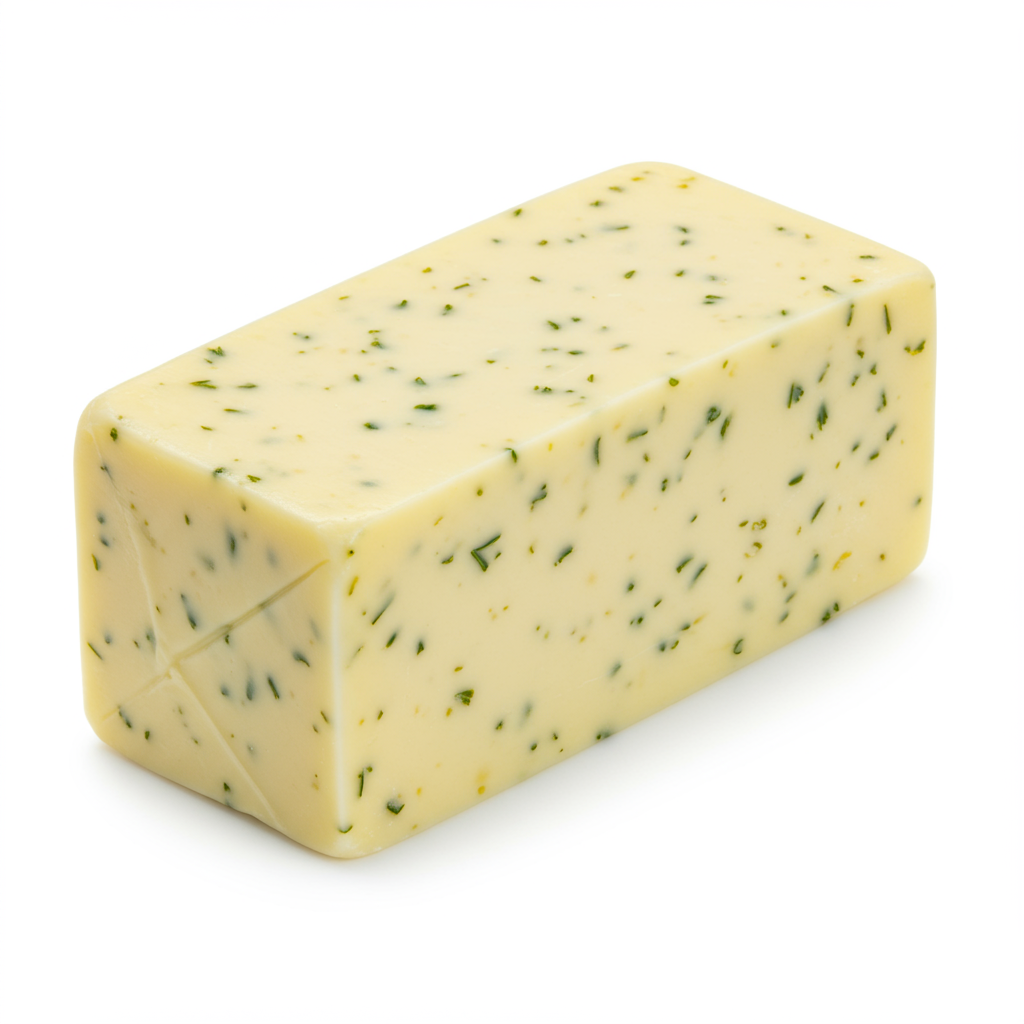Pumpernickel Bread
Pumpernickel bread is a hearty, dense, and slightly sweet rye bread originating from Germany. It is characterized by its dark brown color and distinctive flavor, which comes from a combination of rye flour, rye berries, and often a sourdough starter. This bread has a rich history dating back to medieval times, and it is commonly associated with Westphalian and Lower Saxon cuisine in Germany.
Perfect for sandwiches, spreads, and toast, pumpernickel bread is enjoyed for its long shelf life and versatility. Its robust flavors pair well with smoked meats, sharp cheeses, and tangy condiments. Pumpernickel's high fiber content also makes it a filling and satisfying choice for health-conscious consumers.
80%
CARBS
5%
FAT
15%
PROTEIN
213 Pumpernickel Bread Products
Pepperidge Farm® Jewish Pumpernickel Dark Pump Bread
Wegmans Pumpernickel Bread
Wegmans Round Pumpernickel Bread
Mestemacher Pumpernickel, Natural
Wegmans Pumpernickel Bread, Half Loaf
Freshness Guaranteed Pumpernickel Rye Loaf
Village Hearth Pumpernickel Rye Bread
S. Rosen's Restaurant Style Rye Bread Black Bavarian
Arnold Arnold Jewish Rye Pumpernickel Bread
Paramount Bakeries New York-Style Pumpernickel Rye
Used In 3 Recipes
Pumpernickel Bread Is Frequently Used With
Pumpernickel Bread FAQ
Pumpernickel bread is a robust bread type that has a flavor profile unlike any other. It can be tricky to work with primarily because its dense nature can make it difficult to ensure even toasting or heat absorption when being used in recipes. Where many people go wrong is in slicing - pumpernickel bread is typically served in thin slices due to its heavy texture, and cutting it too thick can make it difficult to eat. However, when sliced appropriately, it’s fantastic for a character-filled sandwich or a unique twist to a bread pudding.
To get the most out of pumpernickel, try using it in dishes where its distinctive flavor can shine. Its dark, rich, sweet flavor makes it excellent as a base for strong, sharp ingredients like smoked fish, onions, or strong cheeses. Also, in contrast to the popular belief, pumpernickel can be used for sweet dishes. Try using it in your next bread pudding recipe for a delightful twist!
Consider using a bread knife with a serrated edge to make slicing easier and always keep a light hand to prevent the bread from squishing. Remember, it's robustness is part of its charm.
One less known fact is that the dark shade of pumpernickel isn't from the rye flour used but rather from a baking process that includes a very low and very long baking period which causes a Maillard reaction, giving the bread its distinctive color and taste.
Why is my pumpernickel bread so dense?
Can I use pumpernickel bread for stuffing?
Why does pumpernickel bread taste sweet?
Can I make a sweet dish using pumpernickel bread?
What spreads go well with pumpernickel bread?
What sandwiches can I make with pumpernickel bread?
Do I need to toast pumpernickel bread?
Why is pumpernickel bread dark?
Can I use pumpernickel bread for croutons?
How thin should I slice pumpernickel bread?
Expiration & Storage Tips
When does pumpernickel bread expire?
Unopened pumpernickel bread can last 5-7 days past the printed sell-by date on the package, if stored properly. Once opened, the bread typically stays fresh for 2-4 days at room temperature. Wrapping it tightly to limit exposure to air can extend freshness. Homemade pumpernickel bread, being free of preservatives, will tend to last for around 2-3 days at room temperature. If you freeze your pumpernickel bread, it can last up to three months. Thaw frozen bread overnight in the refrigerator when you’re ready to eat it.
How do you tell if pumpernickel bread is bad?
Determining if pumpernickel bread has gone bad is a fairly straightforward process. First, look for any visible signs of mold, which could appear as fuzzy spots in different colors. If you see mold anywhere on the bread, discard the entire loaf as mold spores can spread throughout the bread even if it's not immediately visible in every area. Another tell-tale sign is an off or sour smell. Lastly, if the bread has become hard and dry, or if it has an unpleasant taste, it is likely stale and while not dangerous to eat, may not be enjoyable.
Tips for storing pumpernickel bread to extend shelf life
• Store your pumpernickel bread in a bread box or inside a cupboard at room temperature. Avoid storing bread on top of the refrigerator as it tends to be warmer and can make your bread turn stale faster.
• You can also store pumpernickel bread in a plastic bag secured with a twist tie to keep it fresh. If you're going through it slowly, consider slicing and freezing some so it doesn't have a chance to mold.
• For long-term storage, freezing is your best bet. Be sure to wrap the loaf or the slices in plastic wrap and then in a resealable freezer bag. Remember to write the date on the bag before freezing it.
EXPIRES WITHIN
11 - 29
DAYS
Substitutes

Rye Bread

Marble Rye Bread

Multigrain Bread

Honey Wheat Sandwich Thin

Multigrain Sandwich Thin

Wheat Sandwich Thin

Multigrain Sourdough Bread

Wheat Sourdough Bread

Gluten Free Multigrain Bread

Grain Free Nut & Seed Bread
See All
Health Info
Macros
15g
CARBS
0g
FAT
2g
PROTEIN
Allowed on these diets
LOW FAT
HIGH CALCIUM
VEGETARIAN
MEDITERRANEAN
VEGAN
LACTOSE FREE
Contains these allergens
WHEAT

